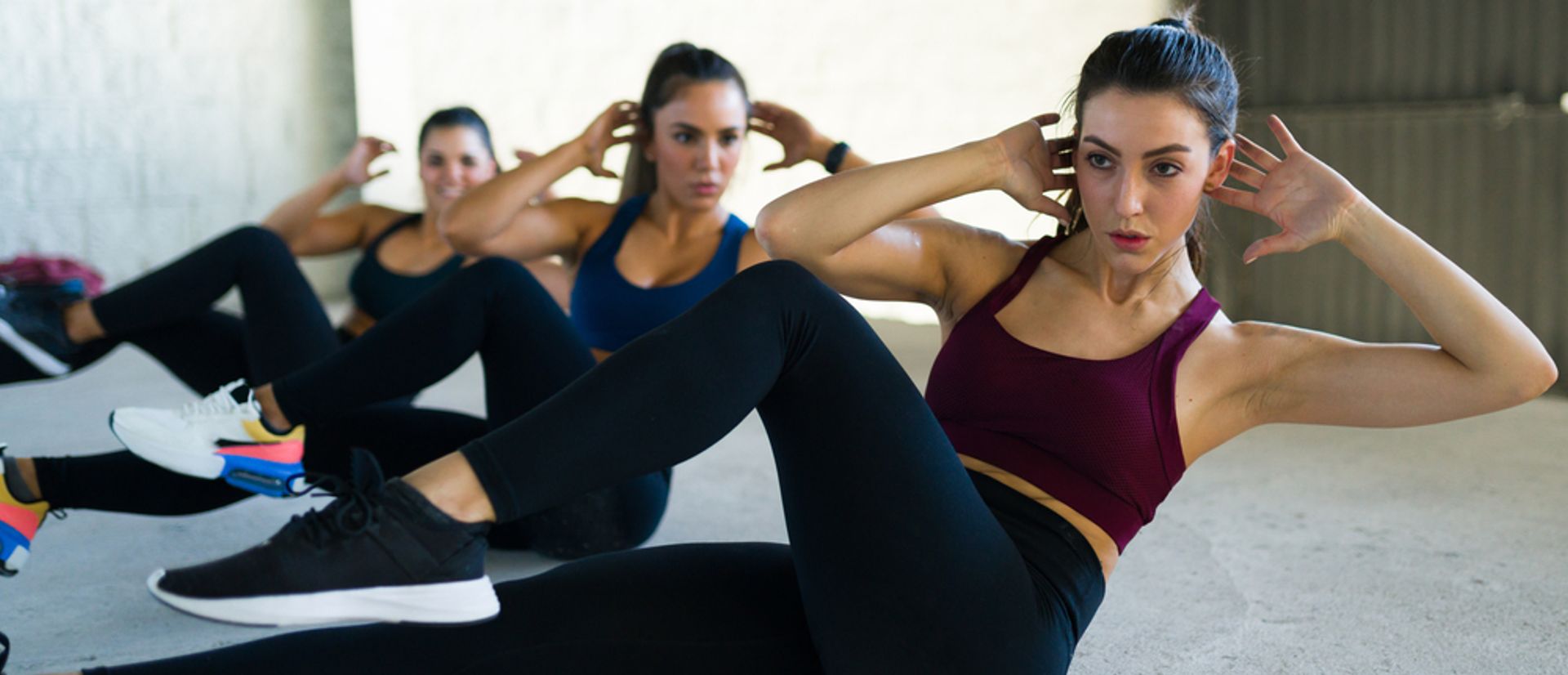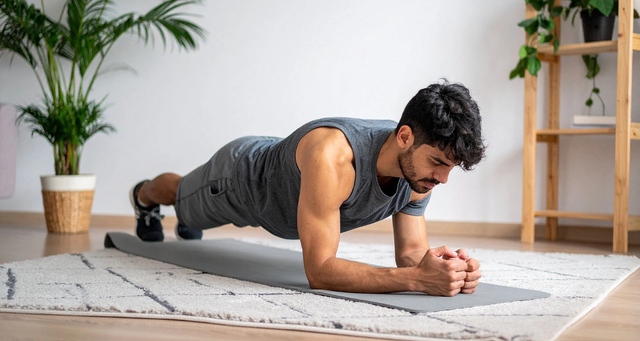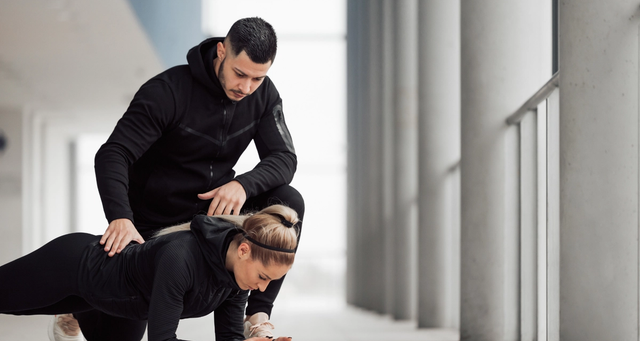
Effective Cardio Workouts Without Using Your Legs
Perhaps your legs are still recovering from a brutal leg workout you did yesterday and need a break. Maybe you’ve injured one or both of your legs and are still in recovery. Or, maybe you have mobility limitations and are looking to turn up the heat without using your legs. Either way, there are plenty of effective cardio workouts that can elevate your heart rate and initiate an intense burn without enlisting the help of your legs.
Cardio Exercises Without Legs
While the muscle groups of the upper body are much smaller than those of the legs, with the right exercises, you can still push your heart rate into the cardio zone. Upper-body cardio exercises are designed to elevate your heart rate while engaging the muscles of your arms, shoulders, chest, back, and core.
Some use equipment, while others use your body weight as resistance, so they’re incredibly adaptable to different fitness levels and environments. For example, you could use:
- Handcycles: This equipment allows you to perform the cycling motion with your arms. Turn up the resistance, and you can get an effective cardiovascular workout without ever using your legs.
- Battle ropes: These ropes, anchored at a specific point, are great tools for dynamic, high-intensity upper-body movements that elevate the heart rate and help hone strength.
- Rowing machines: While you traditionally use your legs with rowing machines, you can modify the movement to focus primarily on the arms and back.
- Resistance bands and weights: Dumbbells and resistance bands can be excellent tools for mimicking the movements of traditional cardio exercises, elevating your heart rate without using your legs.
Fat-Burning Cardio Without Legs
If you’re ready to turn up the intensity in your cardio workout without using your legs, here are a few exercises you can do:
- Seated speed bag punching: Balance on a stability ball and perform rapid punching movements, striking the speed bag with force to initiate the burn and elevate your heart rate. By balancing on the ball, you’ll also target the stabilizer muscles of your core.
- Seated battle rope waves: Sit on a chair or bench with your feet firmly planted on the ground. Grasp each rope in hand and move both hands together to make the ropes create waves. Move your arms quickly to feel the burn.
- Weighted arm circles: Sit or stand with your arms extended to the sides. Make small, fast circles, increasing the size of the circles as you progress. If it feels too easy, grab a pair of dumbbells. Start light, as the shoulders are a smaller muscle group and often don’t have the same strength as the larger muscle groups.
- Hand cycling: Use a hand cycle machine to perform a cycling motion with your arms. Maintain a steady pace and increase the resistance to drive your heart rate into the cardio zone.
- Upper-body rowing: Use a rowing machine to complete the rowing motion. While you’ll need to use your legs for stabilization (or use straps to stabilize your body if you can’t use your legs), this modified rowing mostly targets the upper body. Keep your knees soft and brace your back by keeping your core engaged. Use the muscles of your upper body to complete the rowing motion, turning up the resistance to raise your heart rate.
Create a workout that works for your needs by choosing one or more of the above exercises. For example, you could do 20 minutes of hand cycling, turning up the resistance every five minutes to increase the difficulty. Or, you could alternate between two-minute blocks of seated speed bag punching and seated battle ropes, taking a 30-second break after each exercise.
Regardless of the exercise(s) you choose to do for your upper-body cardio workout, remember to warm up and cool down properly. Your warm-up could look something like this:
- 1 minute of seated arm circles
- 1 minute of lateral raises
- 1 minute of light punching
Once you complete your workout, complete a few minutes of cool-down exercises, such as:
- 1-minute shoulder stretch
- 1-minute chest openers
- 1-minute tricep stretch
- 1 minute of slow arm circles
Customize your workout based on your needs, preferences, and the equipment available to you. If you want something customized to your needs but aren’t sure what exercises to do, chat with a personal trainer near you.

Best Practices for Cardio Without Using Legs
If you’re new to fat-burning cardio without legs, there are a few things you should know. From keeping an eye on your heart rate to adjusting the frequency of your workouts based on your fitness level, here are a few things to keep in mind.
Maintain Intensity and Heart Rate
It’s important to keep an eye on your heart rate and adjust the intensity level based on your body’s cues:
- Monitor your heart rate: Use a heart rate monitor to ensure you’re remaining within a safe zone that promotes cardiovascular benefits. Many fitness watches do this, but chest straps and armbands can also do the same thing.
- Pace yourself: Start with moderate-intensity exercise and gradually increase your activity as your fitness level improves.
- Incorporate intervals: Switch between high-intensity bursts and lower-intensity recovery periods to maximize fat-burning and cardiovascular improvements. For example, you could start at a lower resistance level on the hand cycle and turn it up every other minute to raise your heart rate.
Prioritize Proper Form and Technique
Since you’re not using your legs, proper form and technique become even more important. Without good form, you may injure yourself, so it’s important to:
- Focus on posture and maintain a straight back while performing seated exercises.
- Engage core muscles to support your upper body movements and prevent injury.
- Use controlled movements, avoiding jerky or rapid movements that could lead to strain or injury.
Adjust Frequency and Duration
If you’re new to upper-body cardio training, it’s important to listen to your body and adjust the frequency and duration of your workouts based on its cues. Add one or two cardio sessions per week, increasing the number as your stamina, strength, and endurance improve.
Shoot for 20 to 30-minute sessions, adjusting based on your fitness level and goal. Remember to take rest days and give your muscles time to recover. Overtraining can do more harm than good, so it’s important to give your body time to recharge before your next training session.
Wrapping Up
Cardio workouts don’t always have to involve your legs. You can push your heart rate into the cardio zone without using your legs, initiating a burn in your upper body muscles as a cardio workout. With exercises like hand cycling, battle ropes, and seated punching, you can enjoy a challenging and effective cardio workout. They’re a great option for those with injuries or limitations, allowing you to continue striving toward your fitness goals.
As with any workout, proper form should be your priority. Give your body time to adjust, waiting until your form is solid before increasing the intensity and duration. With time and consistency, your upper-body cardio workouts can help you achieve your fitness goals.
Start your Svetness journey today
Get a free consultation and see how our trainers can transform your wellness journey.





